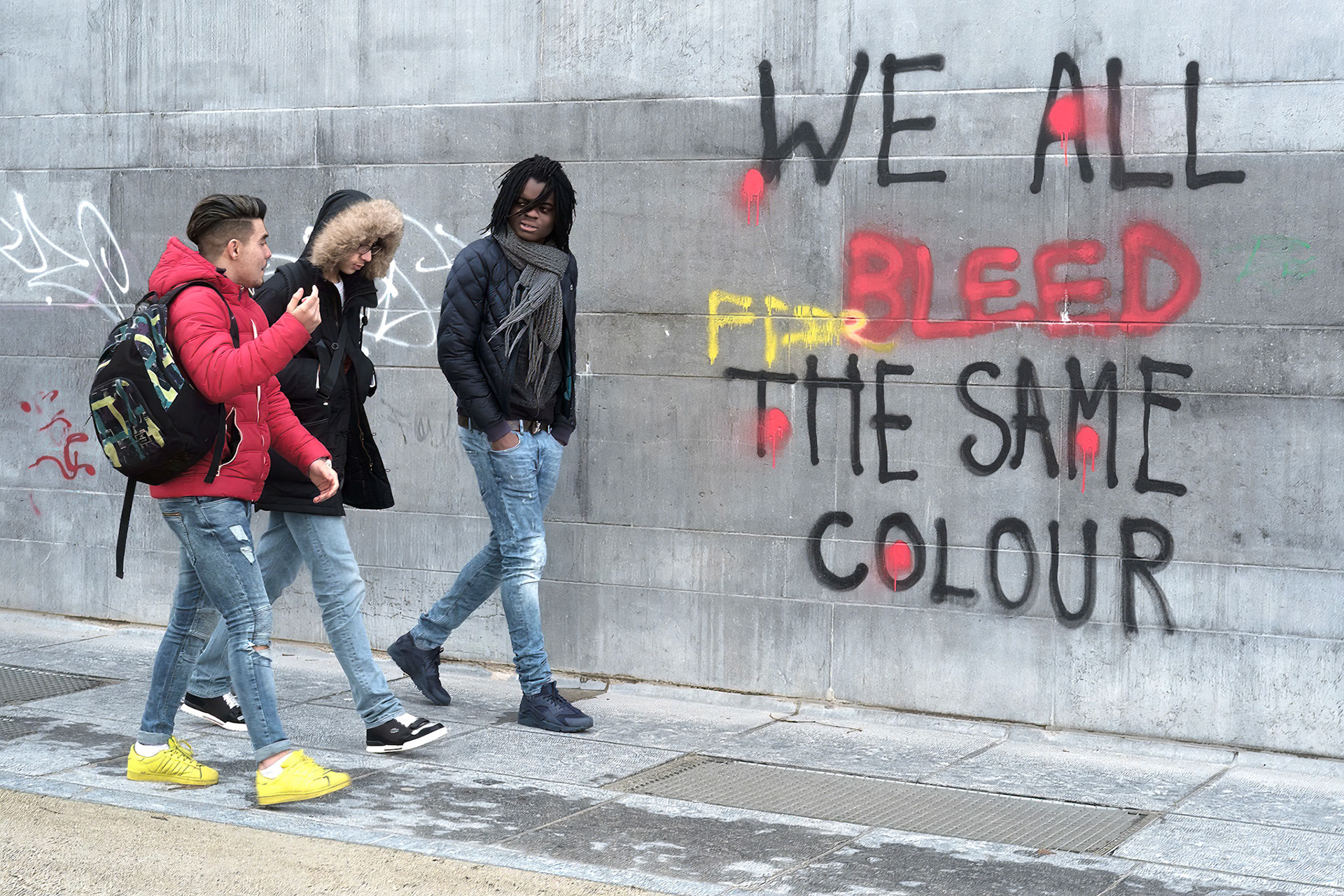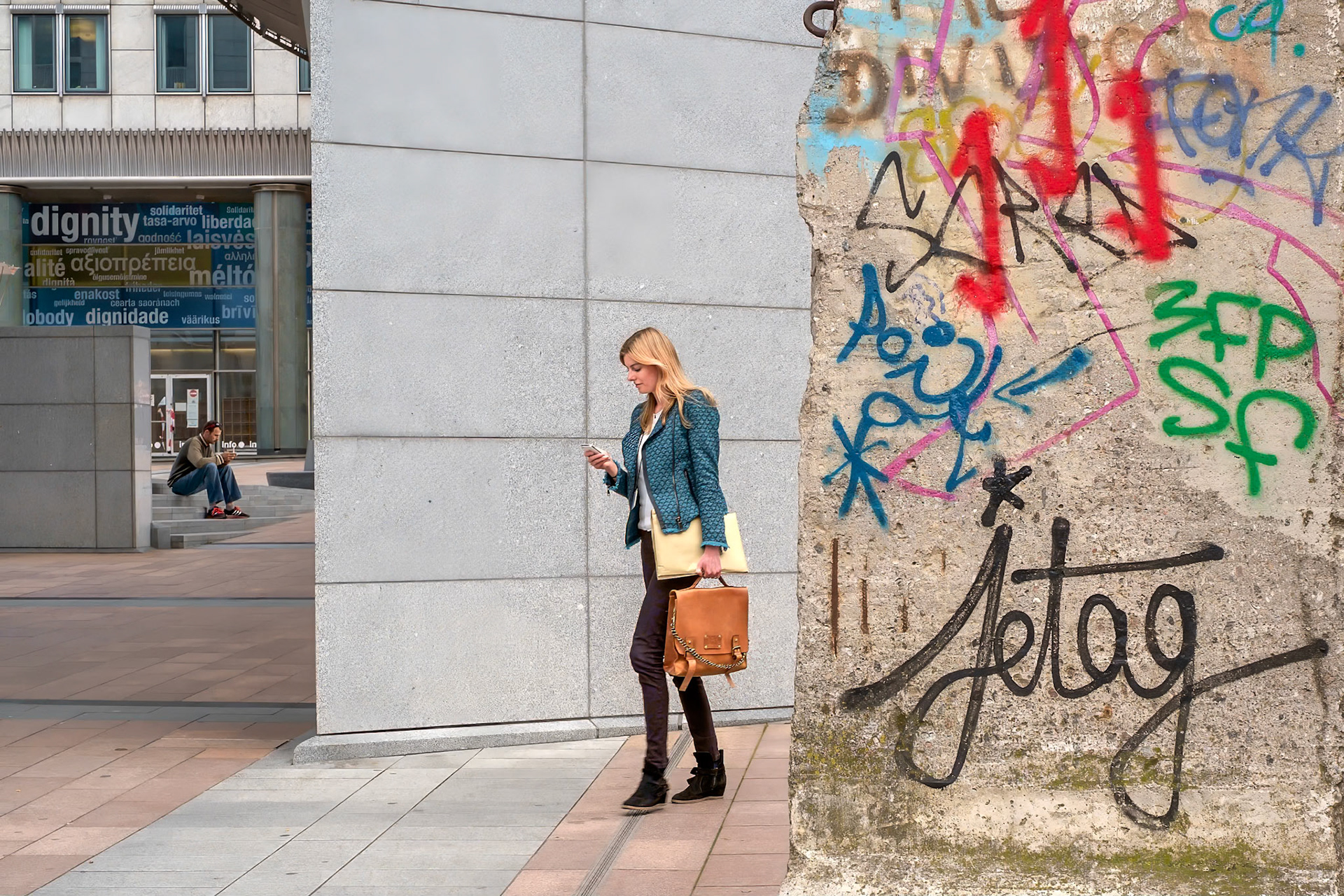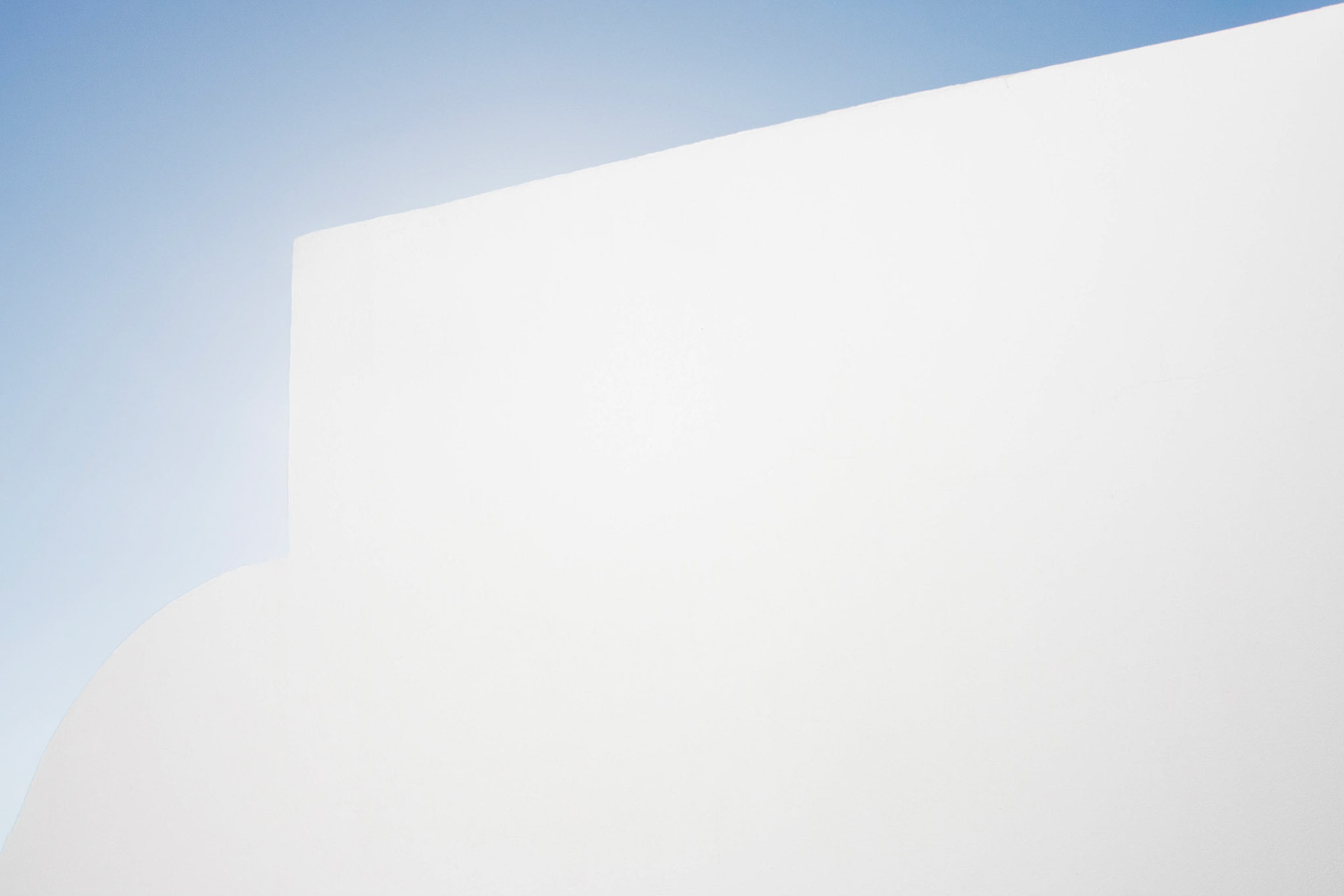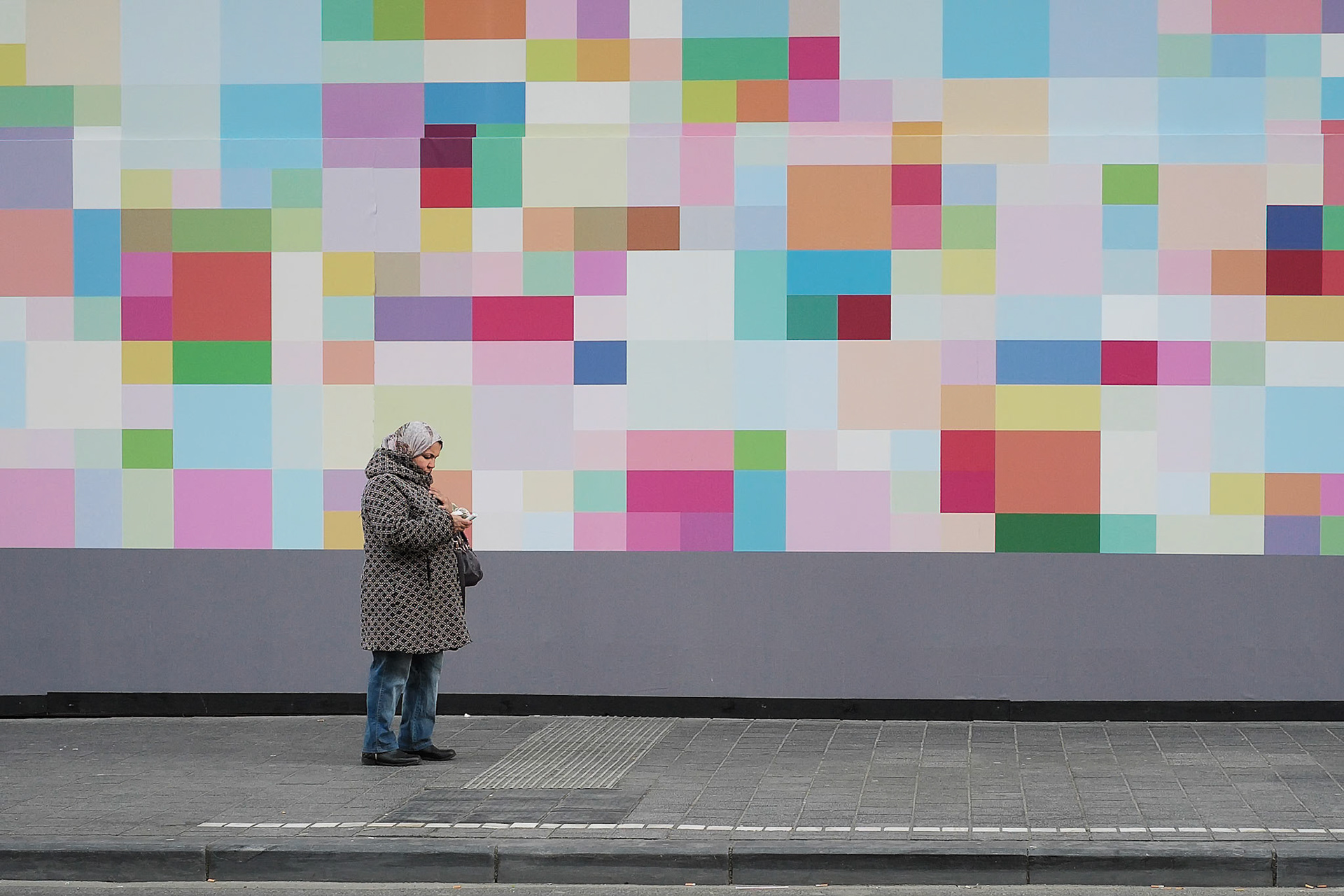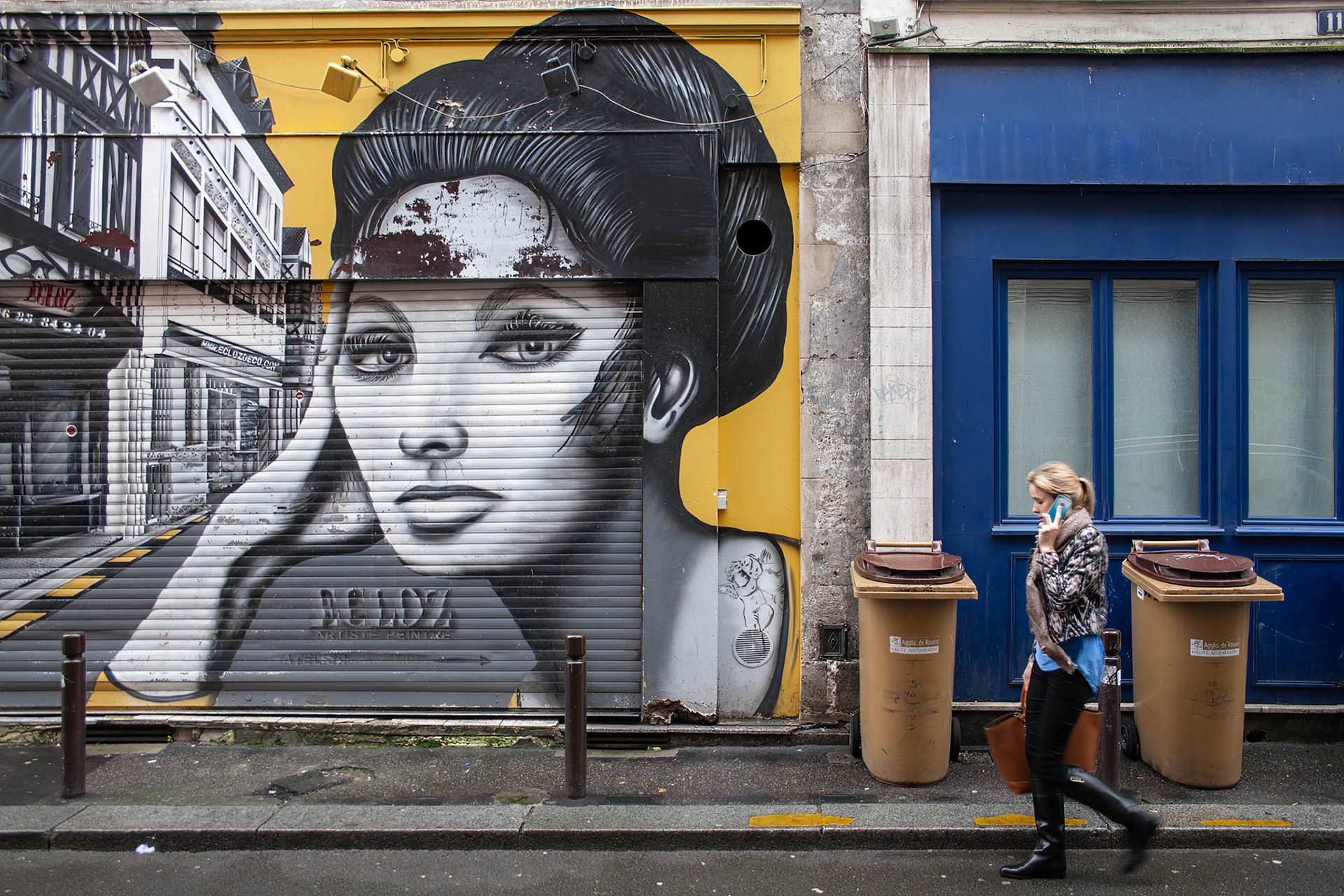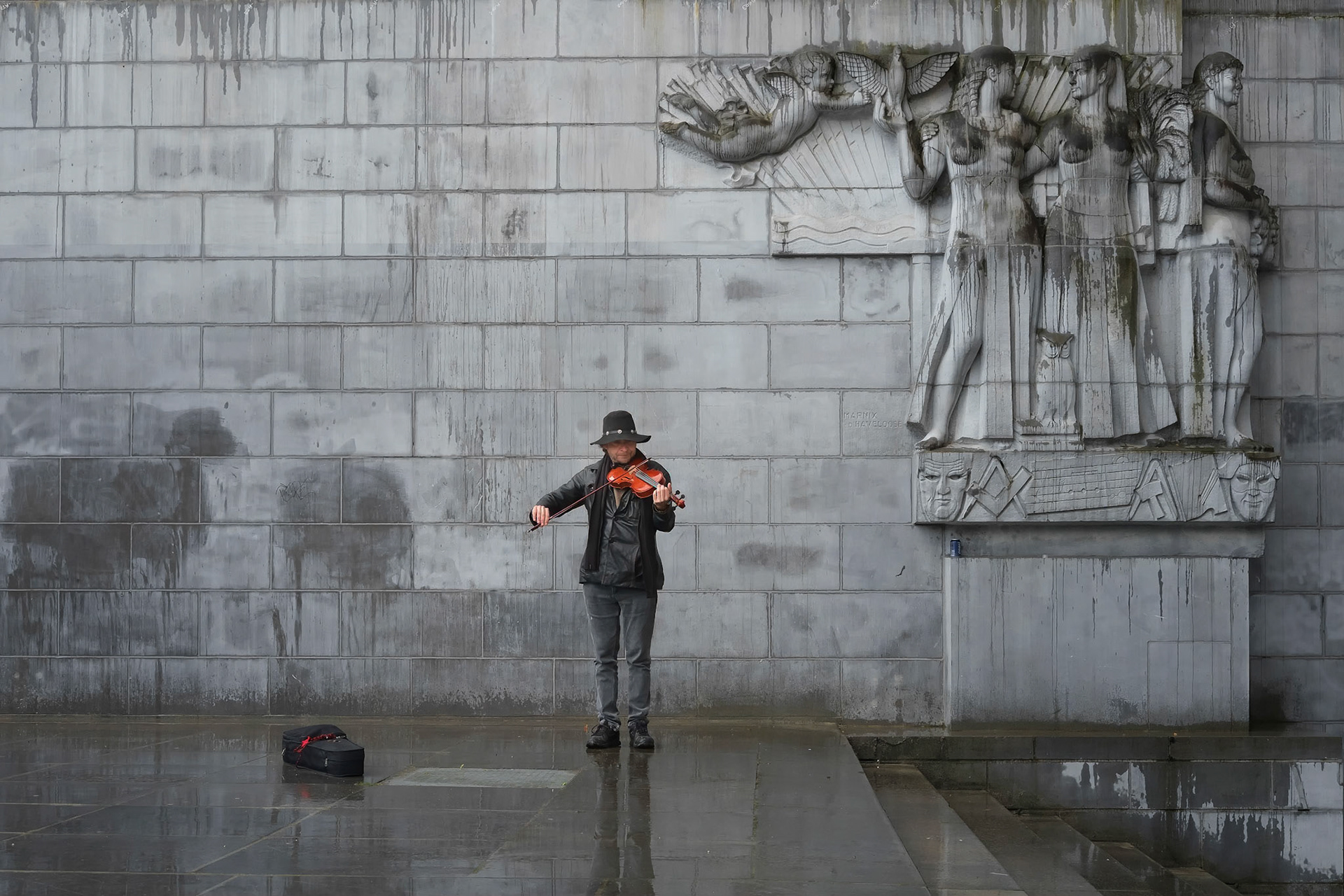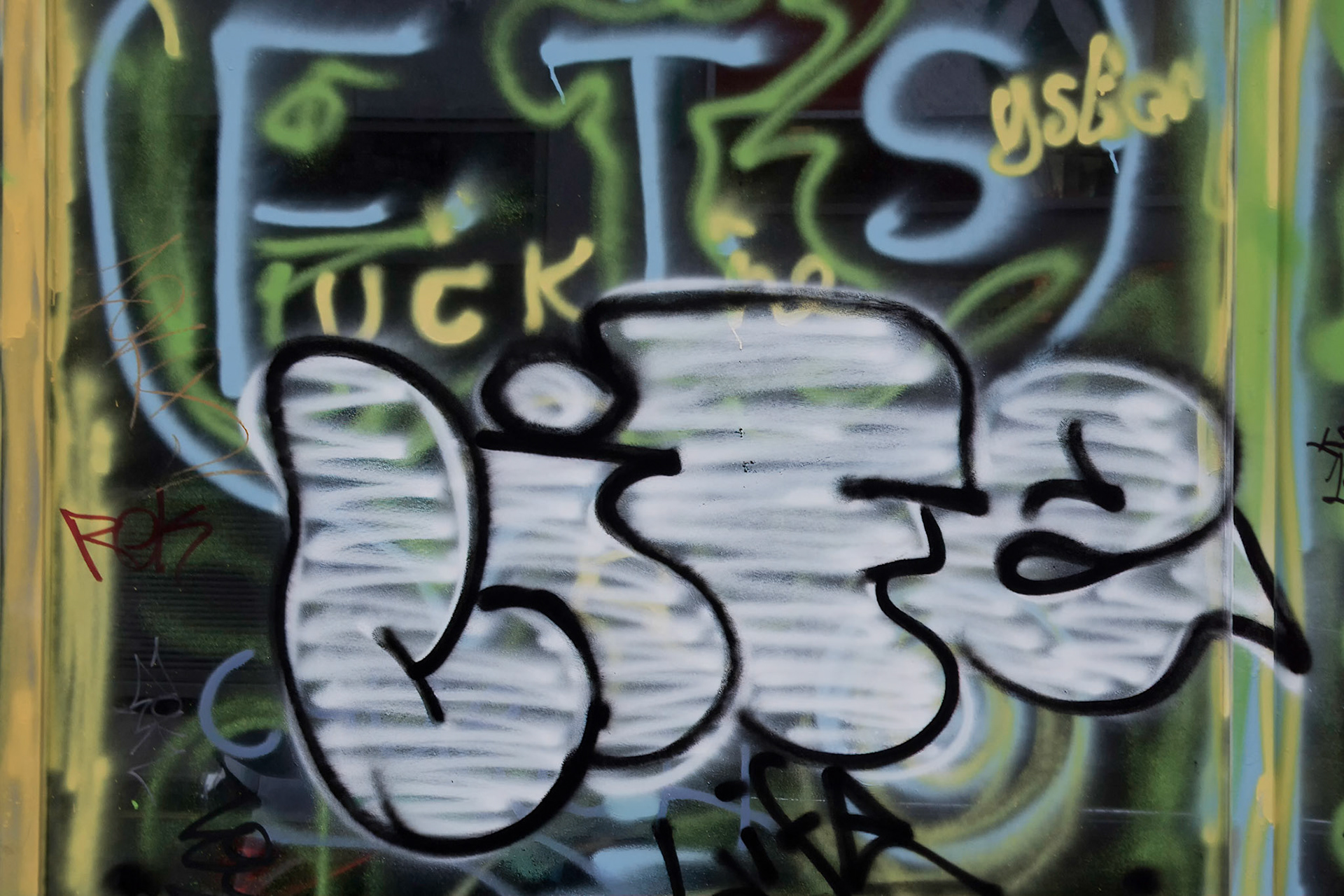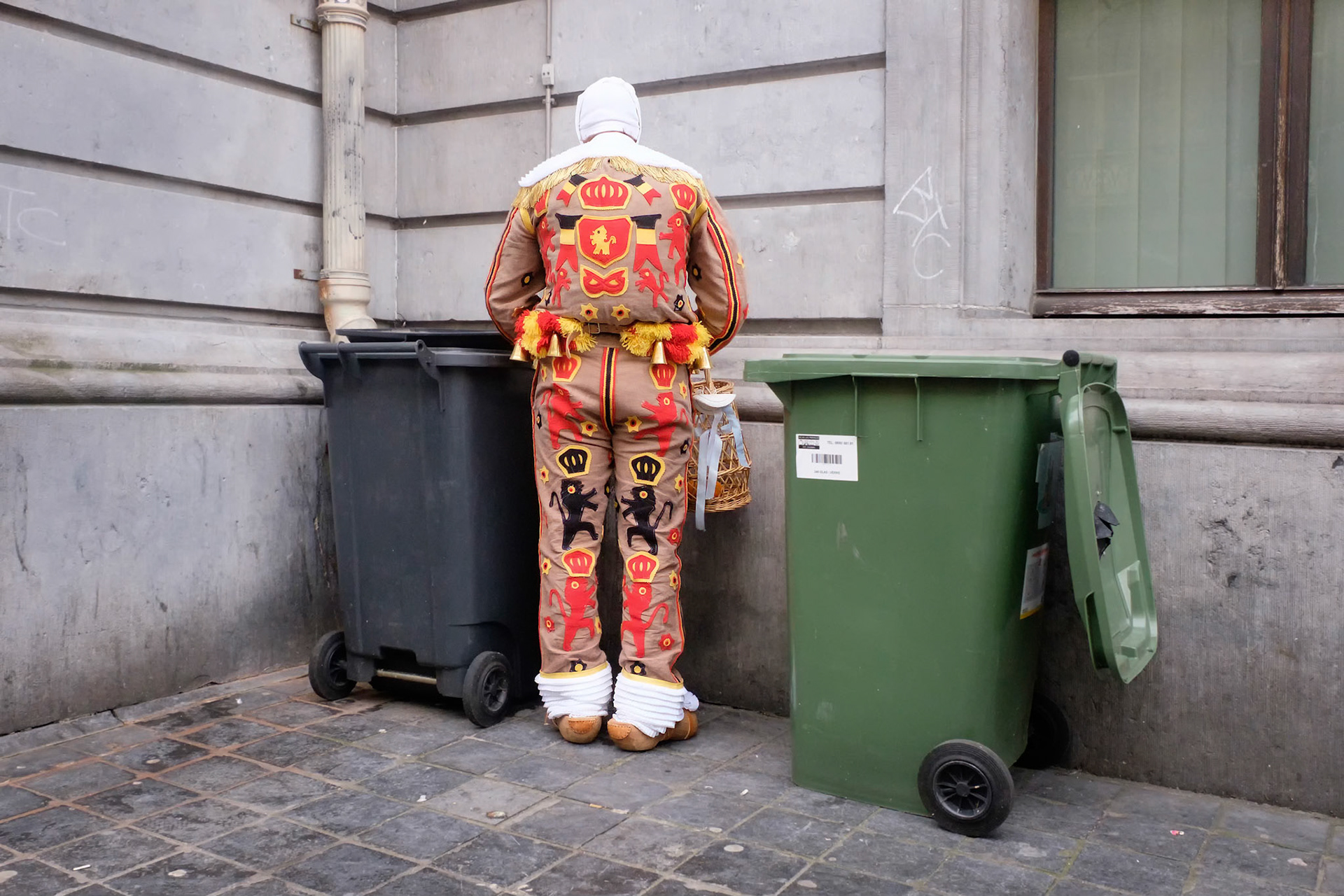It is a bit of a cliché but walls divide. They segregate by race, religion, nationality, political ideology, and wealth. They are there to keep people out, to keep people in or, in the case of the Berlin Wall, to do both. The Berlin Wall has since come down and its fragments are now souvenirs – and monumental street furniture, as you can see in the photo taken in the European Parliament district. Very ineffective reminders of how destructive Cold War hostility is, it has to be said. Ineffective because the West has launched a new Cold War. If there is no enemy, the military/industrial complex demands that one be created.
Some walls exist in the mind as an echo from a painful past that still haunts the present – the Warsaw ghetto wall is a prime example. The photo taken in Antwerp of the Hasidic Jewish man is one of these visual echoes. Now the Israelis have built their own wall to control the Gazans in what some describe as an open-air concentration camp.
Some feel imprisoned behind walls, some feel safe. The Belfast wall began as a temporary expedient but has remained in place because people feel that peace is fragile. The rightly named Wall of Shame in Lima, Peru shelters the wealthy from contact with the poor. Many Americans want their wall against Mexico to run the full 2,000 miles to stem the flow of immigrants. But not many know the migrant crisis is the direct result of US economic and foreign policies. Rather than change policy, the government prefers to hold migrant children in cages.
Some walls exist as a mental barrier of isolation and loneliness, some are constructed from virtual reality behind the screen of a smartphone, cutting people off from their immediate surroundings and shrinking their contact with the real world.
Returning to the actual, mundane world, walls are used as an artist's canvas, as a background for performance, to express an opinion, to lean on, to piss against...

